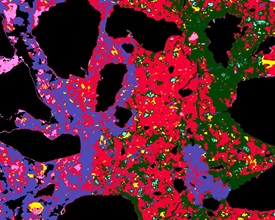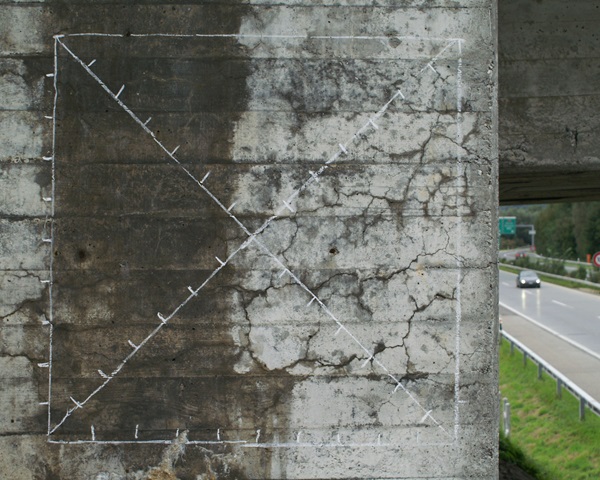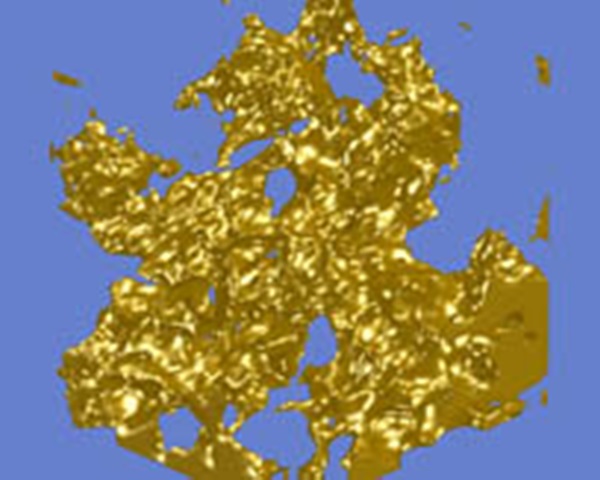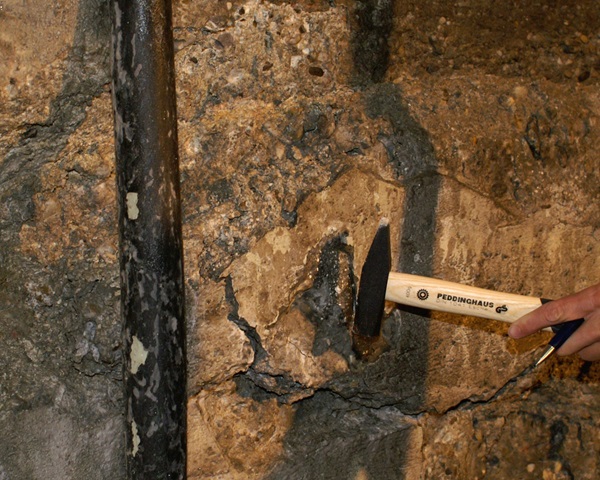Durability
The durability of concrete describes its ability to withstand environmental influences, preserve its properties over time to ensure the planed service life of the structure.
When sulphate containing water interacts with concrete, new mineral assemblages are formed. The formation of ettringite, gipsum and thaumasite leads to a volume increase and can damage the concrete. Sulphate attack in Switzerland mainly occurs in tunnels and sewage systems.
The use of reactive aggregates can result in an expansive alkali-aggregate-reaction in concrete when sufficient alkalis from the cement and moisture from the environment are present. Damages in Switzerland are observed numerous supporting walls, but there are affected bridges and dams as well.
Pore volume and pore size distribution in concrete are mainly dependent on water-cement-ratio and the type of cement used. As the pore network directly defines permeability it is of vital importance for concrete durability.
Chlorides in concrete can cause severe corrosion of the steel reinforcement. The resistance of the concrete covering and protecting the reinforcement is therefore of crucial importance for the durability of structures. Consequently, the understanding of the relation between concrete composition and resistance to chloride ingress is a focus point of research.




